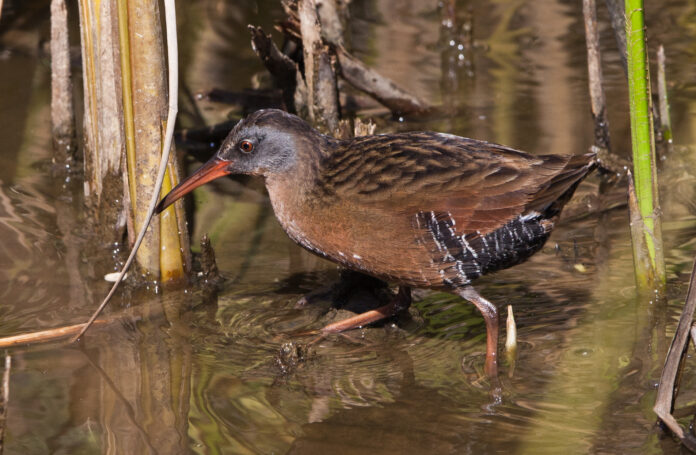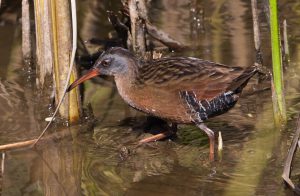
BY HARRY WEEKES

For the record, I am not a birder. On one hand, this is not true. I am deeply fascinated by birds. They are an ongoing and seemingly endless wellspring of curiosity. And they do incredible things, like fly, annually, from Antarctica to the North Pole and back. On the other hand, I am not a birder’s birder. I don’t schedule special birding trips. My almost immediate answer to any bird ID question is “I have no idea.”
I have working familiarity with about 50 birds, most of which are species like magpies, geese and robins. Despite all of this, I love birds because, amongst other things, they have all of the mystery associated with something wild and alive that we can get close to, even if we can’t fully understand them. And they surprise me.
So it was on Sunday, January 13, that I found myself walking along Indian Creek. You might remember this day, too, because it was as close to perfect as it gets. We had snow that week. There was no wind and there were no clouds. The sky was pure blue, and whatever atmospheric condition there is that makes contrails disappear was in full effect.
I was standing next to my favorite bend in the stream—a place where the water carves out a little pool, where watercress creeps out from the bank in a mat, and where a break in the willows allows the sun to ignite the open stretch as though highlighting something quintessential. Add to this a bird—in this case, a Virginia rail, in full adult health and plumage.
I knew right away this was a rail, even though I have never seen one. It was unmistakable—in body shape, in behavior, in habitat, in markings. The bird was working the duckweed and cress and moving in and out of the shallows, all the while lit up by the sun as though it wanted to be painted. Then, I stood up and scared the bird enough that it moved into the protection of the willows and disappeared. And because it was a wild bird, it was gone.
No amount of staring, standing or hoping brought it back. It left something behind, though—a residue of awe and wonder. And a thousand questions, the first of which was, “What in tarnation was that bird doing here, now?” It was like seeing a duck in your living room—all of the parts of the scene make sense independently, but seeing them together is weird. There was something else, too—a feeling.
Arthur C. Clarke said, “Any sufficiently advanced technology is indistinguishable from magic.” Birds have been around for over 100 million years, roughly 1,000 times as long as humans. There is a refined simplicity in them—in all of nature—that is indistinguishable from magic. For me, it is possible to believe in this magic. What makes this so powerful is precisely the fact that, ultimately, it is not understandable. This is incomprehensibility on the other side of complexity. It is neither science, nor religion, although it has elements of both.
Right now I call this “The World I Can Never Know.” For me, it emerges invariably and almost always in the little things. A willow leaf bud. A tiny insect crawling across the snow. A mourning cloak butterfly in the end of winter. And in this case, a Virginia rail eating duckweed on a Sunday afternoon.
Harry Weekes is the founder and head of school at The Sage School in Hailey. This is his 47th year in the Wood River Valley, where he lives with his wife Hilary and their three kids—Georgia, Penelope and Simon—a nice little flock.


